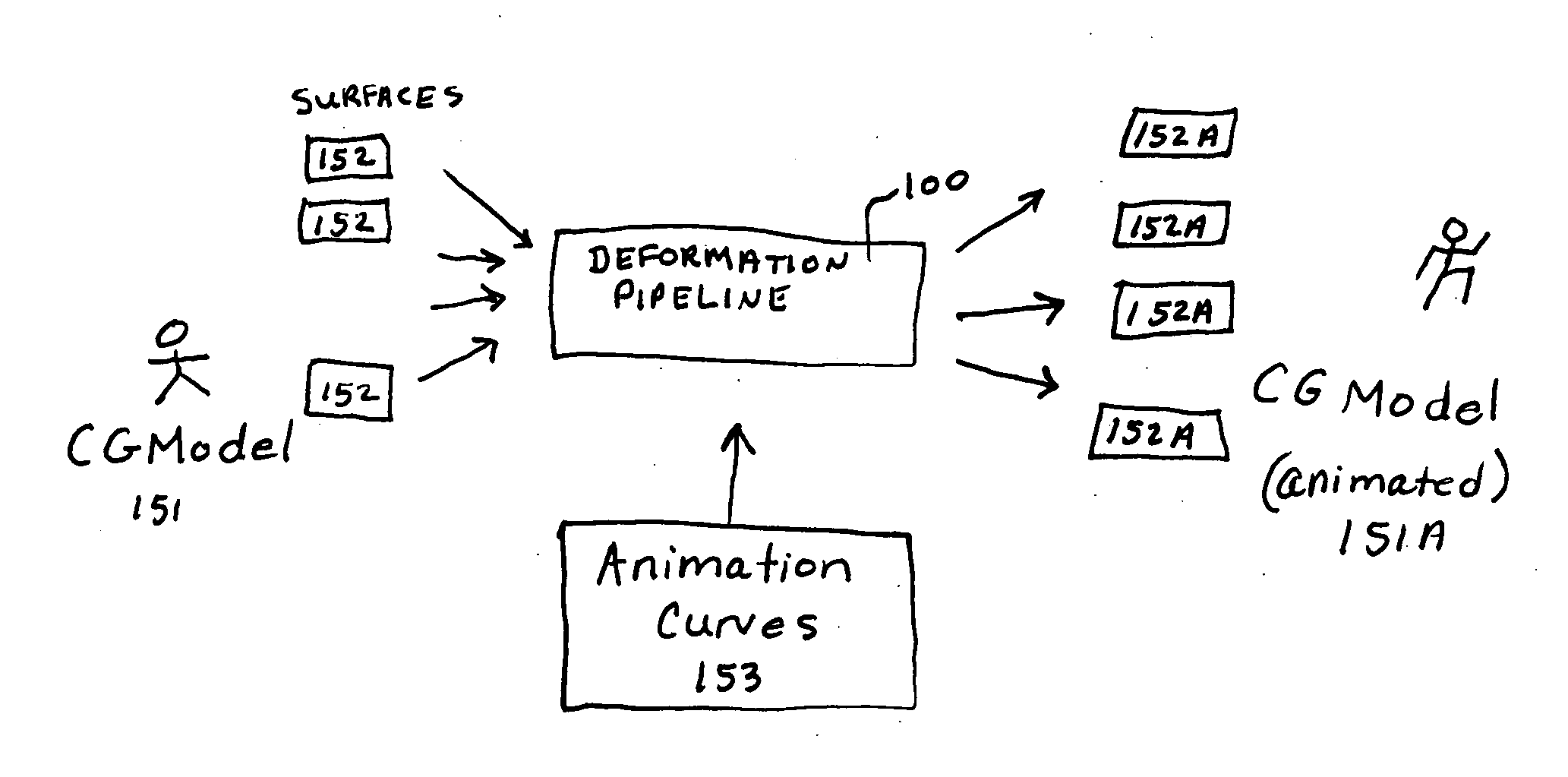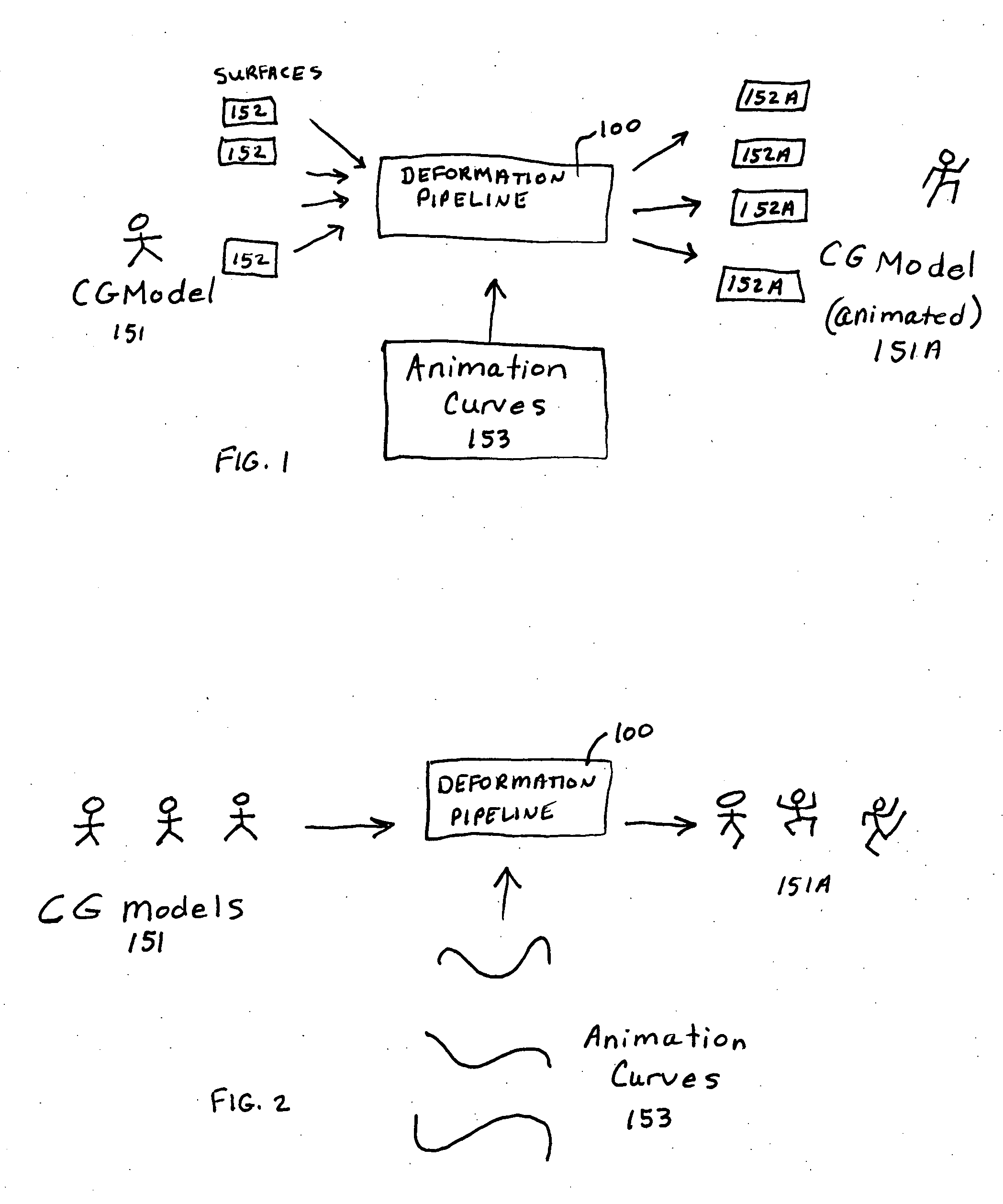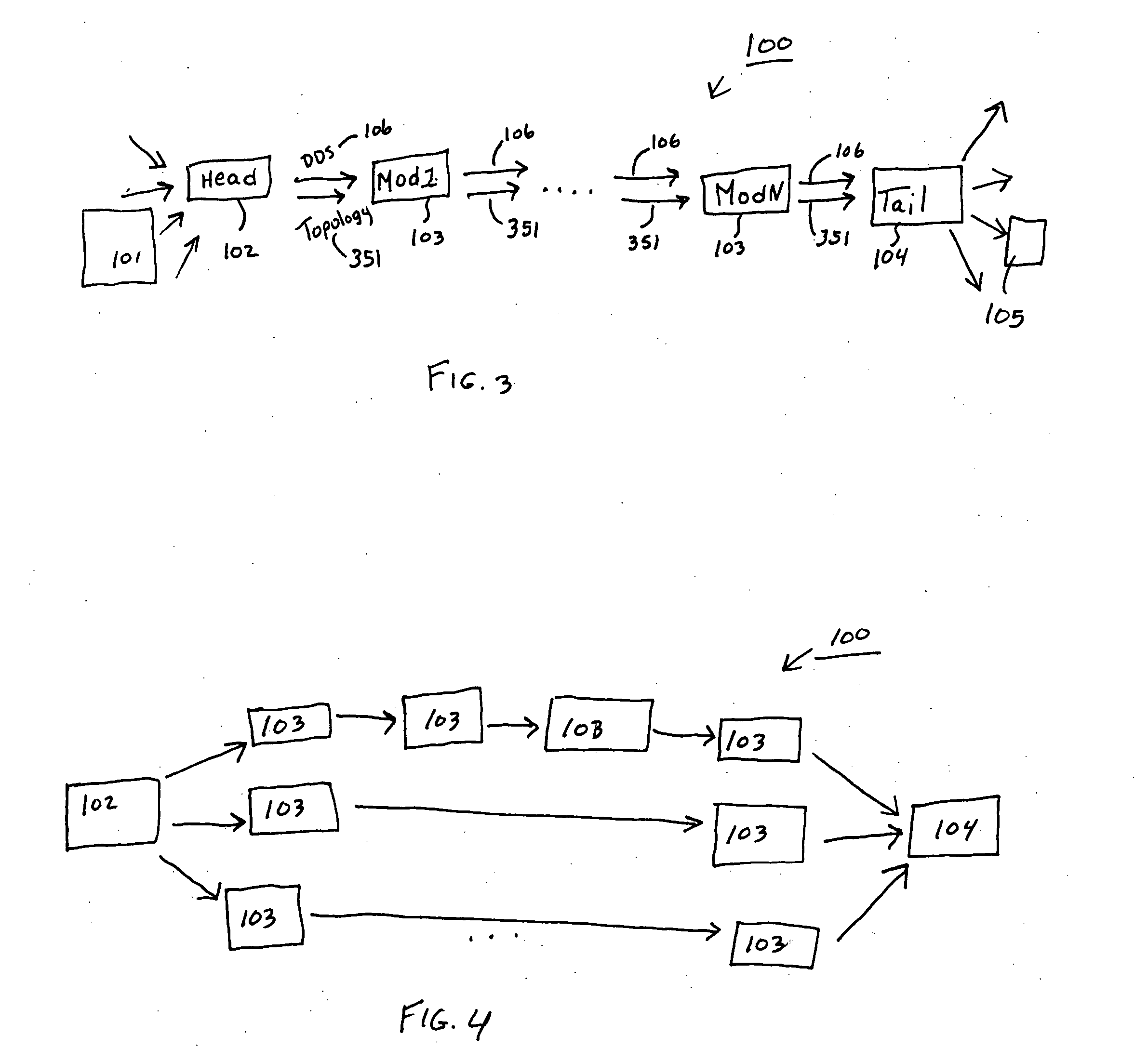Character deformation pipeline for computer-generated animation
a computer-generated animation and pipeline technology, applied in the field of computer-generated graphics and animation, can solve the problems of labor-intensive, manual process that can be very labor-intensive, and difficult to achieve the effect of reducing the labor intensity of the character rig and animating the model
- Summary
- Abstract
- Description
- Claims
- Application Information
AI Technical Summary
Benefits of technology
Problems solved by technology
Method used
Image
Examples
Embodiment Construction
[0073] The term “surface” as used herein refers to surface representations such as NURBS, polygons, curves, subdivisions, and the like, and can also include streams of particles with positions, velocities and accelerations. In general, any point data carrying user-defined scalars and / or fields can be considered “geometry” within the context of the present disclosure, and can be deformed by the techniques of the present invention.
[0074] The techniques described herein are independent of the particular topology, or point connectivity information, of the geometry or object being deformed. For illustrative purposes, the following description makes references to animated characters as the object being deformed; however, one skilled in the art will recognize that the techniques described herein can be applied to other types of geometries and objects.
[0075] Referring now to FIG. 1, there is shown a block diagram depicting the flow of a CG model's 151 geometry through a deformation pipeli...
PUM
 Login to View More
Login to View More Abstract
Description
Claims
Application Information
 Login to View More
Login to View More - R&D
- Intellectual Property
- Life Sciences
- Materials
- Tech Scout
- Unparalleled Data Quality
- Higher Quality Content
- 60% Fewer Hallucinations
Browse by: Latest US Patents, China's latest patents, Technical Efficacy Thesaurus, Application Domain, Technology Topic, Popular Technical Reports.
© 2025 PatSnap. All rights reserved.Legal|Privacy policy|Modern Slavery Act Transparency Statement|Sitemap|About US| Contact US: help@patsnap.com



